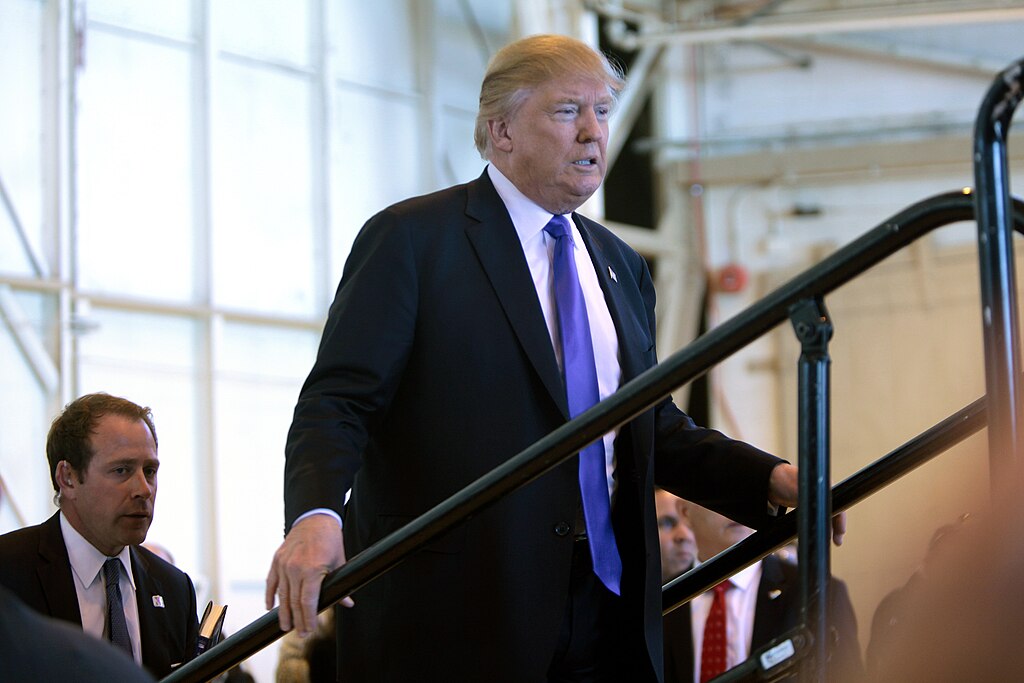Donald Trump’s administration is reportedly planning major changes to national parks funding for 2025, igniting heated debates among conservationists and policymakers. As the president-elect prepares to re-enter the White House in January, his proposed policies for America’s public lands are drawing both scrutiny and support.
Insiders suggest Trump’s approach may include significant budget reallocations within the Department of the Interior. These changes, some argue, could boost energy development initiatives while cutting traditional conservation funding. Supporters believe these measures could streamline inefficiencies and stimulate economic growth. However, critics are raising alarms about the potential impact on park maintenance, preservation programs, and public access.
Conservationists Sound Alarm Over Proposed Cuts
Environmental advocates warn that reduced funding for the National Park Service (NPS) could have lasting consequences. A leaked draft of Trump’s budget proposal reportedly includes a 20% decrease in discretionary spending for parks, with the funds redirected toward energy development on federal lands. Key programs, such as wildlife preservation and visitor safety initiatives, are at risk of being scaled back or eliminated entirely.
Maryland-based conservationist Sarah Williams stated, “These cuts would gut essential services and endanger America’s most treasured natural spaces. National parks are more than tourist destinations—they are vital ecosystems.”
Critics also point to potential conflicts of interest, noting Trump’s prior approval of expanded drilling and mining leases on federal land during his first term. They argue that further reductions in park funding could make way for private sector exploitation of public lands.
Meanwhile, National Park Service employees have expressed concerns about already-stretched resources. The agency has faced a maintenance backlog exceeding $22 billion, and further budget cuts could exacerbate the strain on aging infrastructure and staff shortages.
Supporters Argue for Economic Growth Through Energy Initiatives
Trump’s allies defend the proposed changes, emphasizing the potential economic benefits. By prioritizing energy development and reducing regulatory hurdles, they argue, the administration could generate significant revenue for the federal government. Additionally, they suggest that partnerships with private companies could offset reductions in direct funding for the NPS.
“America’s energy independence remains a key priority,” said Republican strategist Tom Myers. “Shifting resources to achieve this goal can benefit the economy while still supporting the parks through innovative public-private partnerships.”
Trump’s team has not yet commented on the specifics of the proposal, but sources close to the administration suggest that the president-elect will announce details in early 2025.
Online Reactions Highlight Divide
Social media users were quick to respond to reports of Trump’s plans, illustrating the sharp divide in public opinion.
- @GreenAmerica2025: “Cutting national parks funding? This is an attack on our heritage and future generations. Unacceptable.”
- @MAGA_Patriot: “Finally, someone prioritizing energy independence over tree-huggers who block progress! Trump is making America great again.”
- @NatureForAll: “Our parks need protection, not corporate interference. These cuts are reckless and shortsighted.”
- @FreeMarketHero: “Why should taxpayers fund bloated programs? Trump’s plan to modernize the system is long overdue.”
- @EcoWarriorJane: “National parks are sacred spaces. If Trump dismantles them, he dismantles part of what makes America beautiful.”
- @EnergyFirstUSA: “Economic growth AND energy independence? This is the bold leadership we voted for in 2024.”



 Jared Isaacman Confirmed as NASA Administrator, Becomes 15th Leader of U.S. Space Agency
Jared Isaacman Confirmed as NASA Administrator, Becomes 15th Leader of U.S. Space Agency  Trump Signs Order to Ease Federal Marijuana Rules, Signaling Major Policy Shift
Trump Signs Order to Ease Federal Marijuana Rules, Signaling Major Policy Shift  Trump Attends Dover Ceremony Honoring U.S. Personnel Killed in Syria
Trump Attends Dover Ceremony Honoring U.S. Personnel Killed in Syria  Trump Administration Plans Major Increase in Denaturalization Cases for Naturalized U.S. Citizens
Trump Administration Plans Major Increase in Denaturalization Cases for Naturalized U.S. Citizens  Argentina Unions Rally Against Milei’s Labor Reform as Congress Debates Key Bill
Argentina Unions Rally Against Milei’s Labor Reform as Congress Debates Key Bill  U.S. and China Push for Ceasefire as Thailand–Cambodia Border Clashes Escalate
U.S. and China Push for Ceasefire as Thailand–Cambodia Border Clashes Escalate  U.S. Senators Move Toward Deal to Strengthen Military Helicopter Safety Rules
U.S. Senators Move Toward Deal to Strengthen Military Helicopter Safety Rules  EU Delays Mercosur Free Trade Agreement Signing Amid Ukraine War Funding Talks
EU Delays Mercosur Free Trade Agreement Signing Amid Ukraine War Funding Talks  Syria, Kurds and U.S. Race to Show Progress on SDF Integration Deal
Syria, Kurds and U.S. Race to Show Progress on SDF Integration Deal  U.S.-Russia Talks in Miami Raise Hopes for Potential Ukraine War Deal
U.S.-Russia Talks in Miami Raise Hopes for Potential Ukraine War Deal  UN Warns Gaza Humanitarian Aid at Risk as Israel Registration Rules Threaten NGO Operations
UN Warns Gaza Humanitarian Aid at Risk as Israel Registration Rules Threaten NGO Operations  Trump Announces $1,776 Cash Bonus for U.S. Military Personnel Ahead of Christmas
Trump Announces $1,776 Cash Bonus for U.S. Military Personnel Ahead of Christmas  Dan Bongino to Step Down as FBI Deputy Director After Brief, Controversial Tenure
Dan Bongino to Step Down as FBI Deputy Director After Brief, Controversial Tenure  Republicans Raise National Security Concerns Over Intel’s Testing of China-Linked Chipmaking Tools
Republicans Raise National Security Concerns Over Intel’s Testing of China-Linked Chipmaking Tools  Honduras Election Recount Delayed Amid Protests and Political Tensions
Honduras Election Recount Delayed Amid Protests and Political Tensions  Putin Signals Possible Peace or Continued War in Ukraine at Major Year-End Address
Putin Signals Possible Peace or Continued War in Ukraine at Major Year-End Address  Kennedy Center Reportedly Renamed Trump-Kennedy Center After Board Vote
Kennedy Center Reportedly Renamed Trump-Kennedy Center After Board Vote 
































